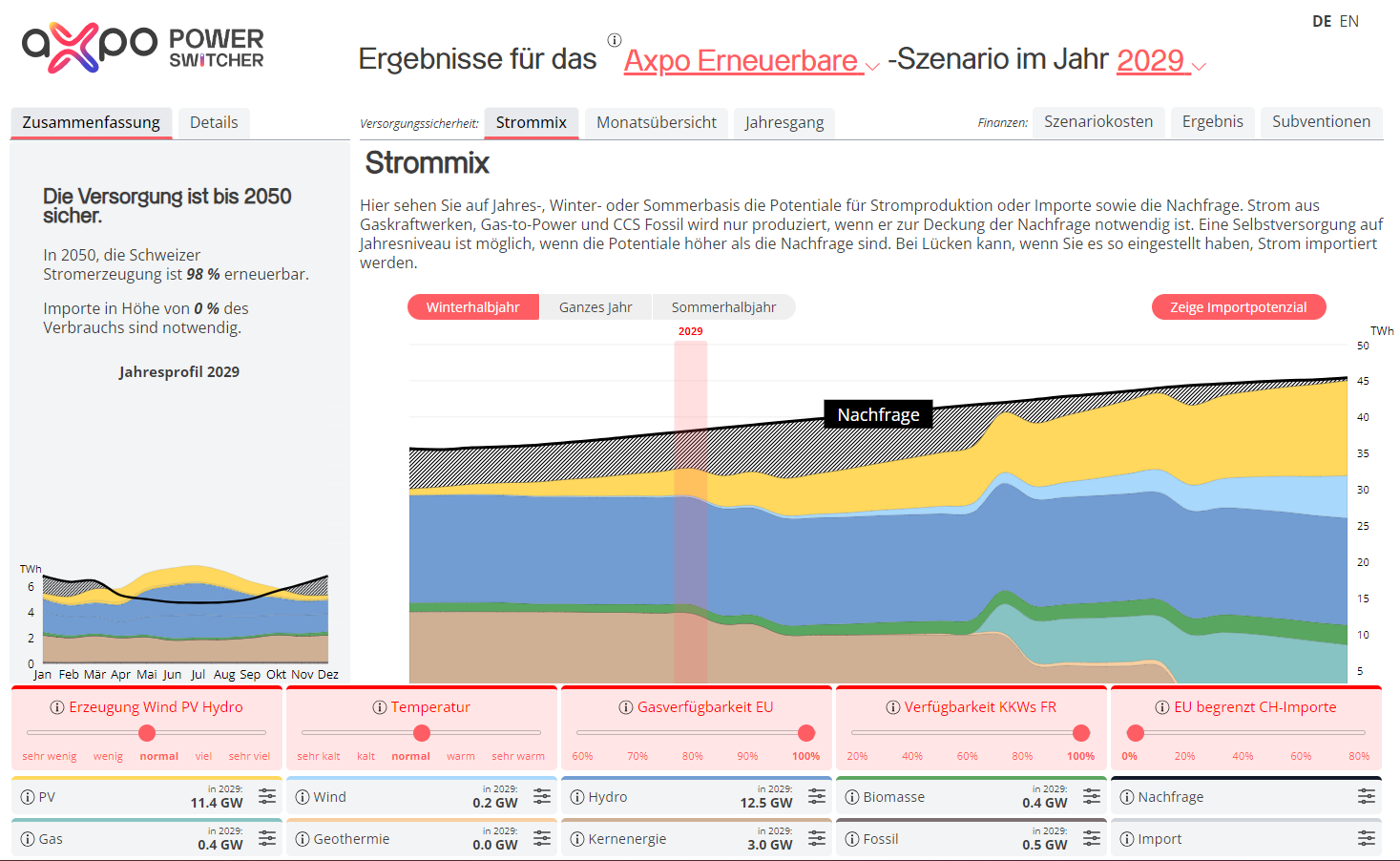16.02.2022 | Successful energy trading is only possible with sufficient liquidity
Record high power prices – positive or negative?
The dramatic rise in electricity and gas wholesale prices has created turbulence for many market players in energy trading. Martin Koller, Head of Strategy & Energy Economics at Axpo, assesses the situation and explains what guarantees individual market players must put in place for forward transactions, how prices are expected to develop in the medium to long term, and how Axpo can leverage this unusual situation successfully.
Wholesale prices for electricity and gas have been at a very high level for months. Why has this happened?
Martin Koller: Lots of factors came together during the past year. It all began with a stronger than expected economic upswing after the coronavirus pandemic, particularly in China where, at the same time, coal production became less attractive. Subsequently, China acted as a coal and gas buyer on an international scale, which resulted in price increases. A poor year for wind in the UK led to higher than usual consumption of gas. Last summer, supply to gas storage facilities declined, especially those belonging to Gazprom. And ultimately, geopolitical tensions led to price increases and high volatility. In parallel with all this, expectations of more stringent climate regulation in Europe resulted in a sharp CO2 price increase. In the first weeks of the new year, the situation on the price front relaxed slightly, which can also be attributed to the relatively mild winter in Europe.
A price increase should be positive for energy producers, but time and again there have been reports of liquidity problems for certain companies – why is that?
Energy companies clearly benefit from price rises, especially hydropower and nuclear power plant operators. However, since the electricity is generally sold a few years ahead of time at a fixed price, the positive effect of the price rise is delayed for producers. In addition, these forward transactions require guarantees, in the form of liquidity, to be put in place for the interim period.
How is that done?
If a producer sells energy forward and the price goes up by 20 Euros before the delivery, as a rule those 20 Euros must always be available as collateral. This is the so-called ‘variation margin’ that includes the price, which is a risk for the counter-party. Once the energy is delivered, the collateral is returned to the producer. Sales via the exchange must be additionally hedged with a so-called ‘initial margin’ in case the price goes up before the electricity is delivered. Since prices at the end of 2021 increased rapidly and price volatility was extremely high, high variation and initial margins became due for power suppliers in a very short time. This situation was unprecedented.
Hearing this, parallels to the banking crisis quickly emerge. Are we running into an analogous energy crisis right now?
No. In the case of the banks, the issue was that they had bet on the wrong investments, whose values lost massively. Now, in the energy sector, the opposite has happened, so to speak: power plants are gaining in value due to higher prices. The challenges on the liquidity side are due to exchange regulation, as suddenly much more collateral has to be deposited. However, market participants in energy trading get this money back as soon as they have delivered the electricity. The money is effectively just sitting in a blocked account until the contract is fulfilled. So this is not a profitability problem, quite the opposite. The analogy to the banking sector is definitely misplaced.
What needs to happen so that companies in energy trading can avoid such a situation in the future?
The collateral system is absolutely justified because it protects market players from financial damage if another player drops out. However, when price fluctuations are extreme, as we saw around the Christmas/New Year holiday season, high collateral amounts become due for payment. This makes sense, but it shouldn’t go so far that robust companies lose their liquidity. Perhaps we need a system that gives players more time when price jumps are extreme. The challenge is that this must not be at the expense of protecting other market players.
Was this a unique situation or will power prices remain at this high level?
The market agrees that prices significantly more than 100/EUR/MWh do not represent the new normal. In general, it is expected that they will decrease again in the medium to long term. However, the level at which prices are expected to even out in the long term has risen noticeably in the past months, according to market assessments, for example in Germany from 60 EUR/MWh in August to more than 80 EUR/MWh today.
Why is that so?
In addition to rising forward prices for coal and gas, structural factors such as the expectation of stricter CO2 regulation come into play. However, what's interesting is that higher long-term prices are not a pan-European phenomenon. In Spain and the northern European markets, for example, the expected long-term price level is much lower at under 40 EUR/MWh. It will be interesting to see if this spread is maintained or whether convergence sets in once again.
What would happen if the high price situation continues and producers go bankrupt because they are unable to preserve liquidity – would this ultimately endanger the security of supply?
In principle, constantly high prices would be the best of all possible worlds for the finances of energy producers. But a strong price spike coupled with high market volatility could trigger liquidity problems for some suppliers in future. These situations are challenging but, at the same time, companies currently have various financing sources at their disposal. Even if this were no longer the case in the future, there is a mechanism, at least for the large Swiss partner plants, where another partner could step in as the operator. I am also optimistic for other countries – after all, power plants make profits when the price is high. If an operator drops out owing to a lack of liquidity, the power plant can continue to be operated by a third party long before it is sold to a new owner. Liquidity problems or the loss of a market player are unlikely to result in supply shortfalls and certainly not in long-term shortages.
Axpo is said to be in a good position in terms of liquidity. Why is that?
Axpo has achieved good financial results over the years and was able to start the new financial year with a high liquidity of about CHF 4.3 billion, as of 30 September 2021. This is where the wisdom of our financial planning and strategy pays off.
How was this achieved?
Axpo has always been able, on its own account, to hedge the increased financing requirements for trading. Thanks to the recent expansion of our financing structure with a sustainability-linked bond and new credit line, we have also created additional financial leeway for the current financial year and major investment projects in the upcoming years. We are relying on an asset-light strategy for investment projects, which will tie up less funds.
The ‘variation margin’ in energy trading on the exchange is the daily margin payments made by energy traders to a clearing house, such as the European Commodity Clearing AG. The ‘variation margin’ balances out the change in the market value of the open position compared to the cost price (‘mark-to-market’) for each participant in energy trading on a daily basis. If the market value develops positively, the buyer is credited with the difference - in the negative case, he must send the amount to the counterparty. The daily settlement thus minimizes the default risk.
The ‘initial margin’ is a minimum amount required by the clearing house, which each market participant must provide before a trade transaction. In this way, the clearing house protects itself against the default of a contracting party. The ‘initial margin’ is comparable to an insurance premium, which ensures for the individual market participants that the contract will be fulfilled.
In the case of bilateral energy trading contracts that are not concluded via the exchange, instruments similar to the ‘variation margin’ are generally used, but an ‘initial margin’ is usually not.




.jpg)





